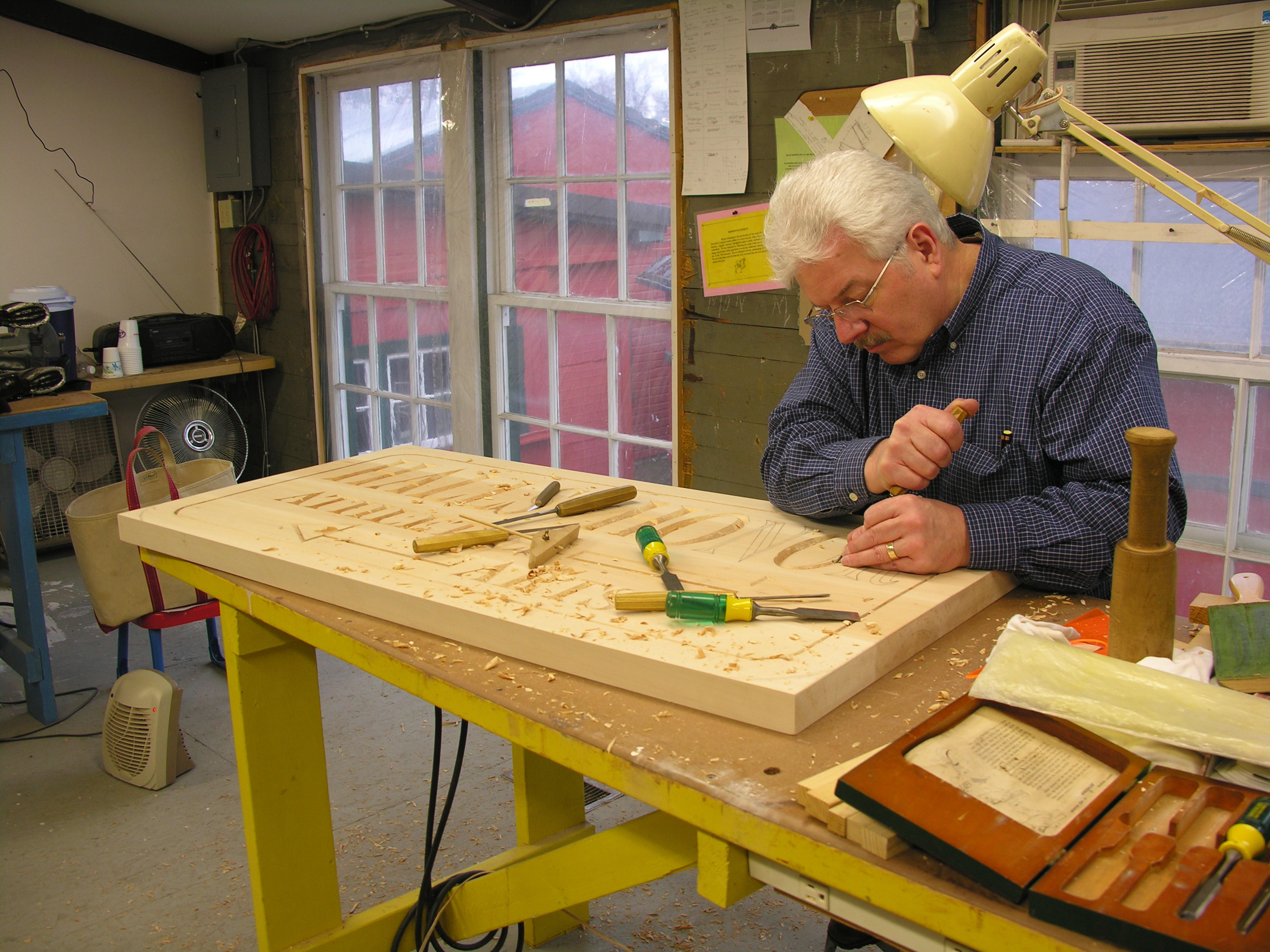Wood Carving in the Lumber City: Doug Bathke
Doug Bathke carving a sign for the Hall of Honors at North Tonawanda High School, in North Tonawanda, New York: a city with a long history and association with lumber.
North Tonawanda, on the northern bank of Tonawanda Creek, received its nickname of 'Lumber City' from its historic industry of forwarding, producing, and shipping lumber. Easy access to lumber led to not only the wealth of local lumber 'barons' whose mansions can be found in the city, but also major wood-related companies, including: the Allan Herschell Company (the largest of the five carousel makers in the city), the Wurlitzer Company (known for their production of pipe organs, barrel organs, and pianos), and the The Ray H. Bennet Lumber Company (a local vernacular competitor to the Sears catalog home).
The legacy of these companies and the heritage of North Tonawanda's lumber industry continues, most notably through the Herschell Carrousel Factory Museum, a museum located in the old Allan Herschell Company factory. The museum provides an inside look into the creation of carousels and carving of carousel horses through a series of exhibit installations. In addition, the museum also maintains historic carousels and other rideable attractions for children. The Niagara Frontier Wood Carvers, one of the oldest wood carving clubs in the region, has their current home and meeting space in the museum.
One of the founders of the Herschell Carrousel Factory Museum and Vice President of the Niagara Frontier Wood Carvers is Doug Bathke, a wood carver originally from Wisconsin who settled in North Tonawanda, with over fifty years of carving experience, and forty years of teaching it. Doug's repertoire includes not only the carousel horses, but a wide range of traditional and contemporary works, and was one of the five members of the Herschell Carrousel Factory Museum Guild that carved the Niagara County Logo for the Niagara County bicentennial. This carved logo can be seen hanging in the Niagara County Legislature Chamber in Lockport.
In this photo, Doug is seen carving a sign for the Hall of Honors at North Tonawanda High School (the Lumberjacks), where he taught for over 25 years as a social studies teacher. Having the signage carved out of wood provides another reminder for students in the school of the city's industrial heritage and connection to lumber.
Excerpts from a February 25th, 2019 group interview with the Niagara Frontier Wood Carvers, conducted by Edward Millar and Niagara University students in his AHM357A: Exhibiting Cultures course.
"I use mostly gouges, longer handled chisels, and different shapes. I started out like everybody you have one or two tools. But I think I'm up to three or four hundred (tools) now after all these years...some I use a lot and some are really pretty to look at." - Doug Bathke
"If you're just starting a project it's called 'roughing it out'...just getting that rough shape. Some days you just let wood fly and you don't have to concentrate on whether you're taking off the wrong stuff. But then you get down into the details, and some days, I know with me if I think I'm going to finish this thing up today, and when I get down to the first couple cuts are the wrong ones. I know....maybe not a good day to carve. Maybe a day to go sharpen up the knives and go back to get at it another time." - Doug Bathke
"Northern grown wood (basswood) is the best because of the slow growth rings. It makes a tighter grain and it really cuts nice. Lot of people think Buffalo is northern, but you have to go like northern Minnessota, Michigan, and Wisconsin for some really great ones." - Doug Bathke
"Carving is an ancient art that should really keep going. That's what we're trying to do (at the club). We learned it ourselves but we're really trying to pass it on to others too." - Doug Bathke

